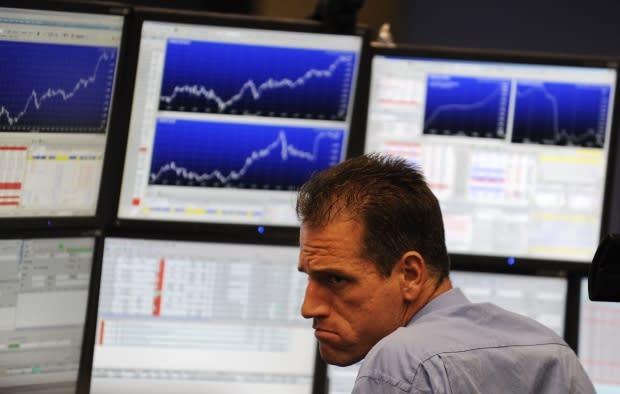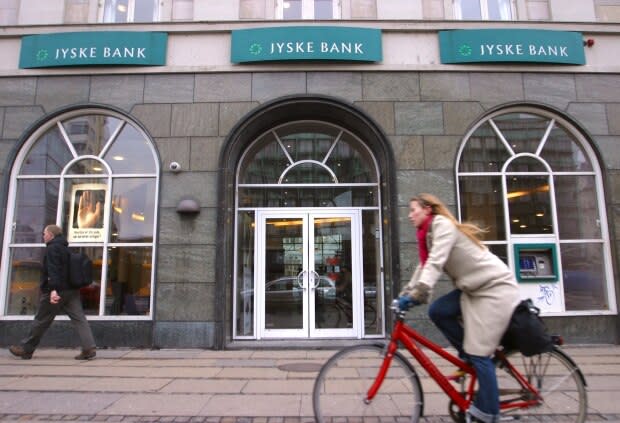Free mortgages and bond yields turned upside down: trade war impacts veer toward the wacky
It's been relatively easy, so far, to feel immune to the effects of the trade war that U.S. President Donald Trump launched about a year ago.
Sure, maybe if you were the captain of a ship full of sorghum, changing direction on the high seas with each new presidential tweet, you might sense the tides were shifting. And anyone trying to buy a Harley Davidson in Hungary was likely also keenly aware that there was some funny business afoot.
But unless you happened to be a Canadian exporter of steel and aluminum or a Mexican avocado farmer, it was perhaps easy to think the world of international trade was largely business as usual.
Not anymore. Markets were whipsawed this week by the slow realization that the outlook for the world's economy isn't getting better — it's getting worse. And while 800-point drops for the Dow Jones index tend to generate a lot of headlines, it's what's happening in some far more under-the-radar indicators that are the best signs of just how wacky the economy is getting.
Negative rates
Bond yields don't tend to get a lot of attention outside of the financial press, but their behaviour in recent weeks is perhaps the surest sign of just how topsy-turvy the global economy has gotten. Bonds are debt, issued by governments and companies, that come with an interest rate attached so that the people loaning out the money get a return over time.
Generally speaking, bonds are seen as safe investments, which is why investors only expect a few percentage points of return from holding them at the best of times. But the fog over the economic outlook is so thick at the moment that many borrowers are getting away with selling bonds offering a negative yield.

Anyone buying that bond is willingly buying an investment that's guaranteed to lose money, but investors are more than happy to buy it up — because the fear is that alternative investments will fare even worse.
That may sound great for anyone looking to buy a home in Copenhagen, but it's very bad news for the world's economy, says Paul Gardner, partner and portfolio manager of Avenue Investment Management.
"There's something around $16 trillion of bonds around the world dealing with negative interest rates," he said in an interview with CBC News this week. "That's very unhealthy ... just because it has a feel of instability."

"You always want to have positive interest rates," he said. "You want low, but you don't want negative."
Those negative yields are filtering down into the economy in some truly jaw-dropping ways. A Danish bank this week started offering a negative yielding mortgage — meaning anyone who signs up will get money to buy a home, and then get a tiny interest payment in their account every month to help pay down the principal.
Yield curve has flipped too
As much as one-quarter of all the government debt in the world is currently upside down. And even the bonds that still eke out a tiny return are flashing red warning signs of their own.
Under normal circumstances, long-term bonds tend to pay out more than short-term ones simply because it's a lot easier to forecast the short term than the long, so a bond buyer demands a higher rate for a long term to offset the risk of that uncertainty.
But a funny thing has happened of late, in that yields have flipped — long-term rates are even lower than short-term ones, — which suggests investors have more confidence in the short term than they do over the long term.
That's historically been a portent of bad things to come. Specifically, the yield on the U.S. government's 10-year bond briefly dipped below the yield on the two-year. And every time that has happened since the Second World War, a recession has soon followed.
It may be rare, but to Bruce Bittles, chief investment strategist for R.W. Baird & Co., the yield curve inverting makes perfect sense.
"I don't think there's any mystery," he said in an interview. "It's because interest rates all over the world are plummeting."
"The Federal Reserve is going to have to come in and lower rates again, so the bond market is anticipating that."
Gold is suddenly soaring
If investors think the world's economy is lurching towards recession, it makes perfect sense that interest rate predictions are following suit. And so, too, does what's happening in the investment that investors often run to in times of fear: gold.
The glittering metal touched a six-year high this week above $1,500 US as fearful buyers poured money into what's perceived as a safe haven.
"When investors are looking for somewhere to run, many view gold as an attractive option, particularly when the world's central banks also seem to believe the same," the analysts at RBC Capital Markets wrote this week. "Rate cuts are back in style and ... global monetary policy is indeed gold positive."
It would be ironic if central bankers' desire to stimulate the economy caused investors to park their money in an asset like gold that does nothing for the economy. But that's just par for the course in today's uncertain times, according to author and portfolio adviser Hilliard MacBeth.
"Moving into cash and gold is not what central bankers were anticipating when they pushed for zero rates," he said in a note to clients on Friday. "But in the strange world we live in today, expect the unexpected."


